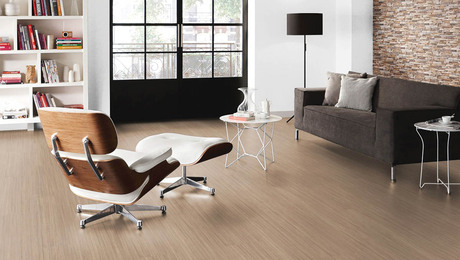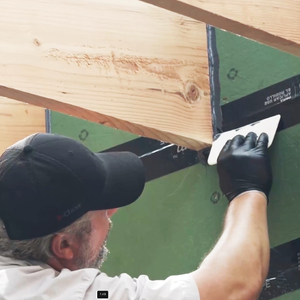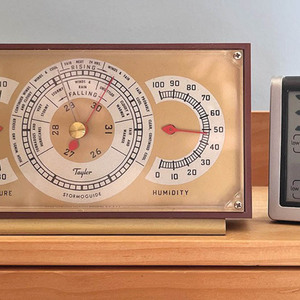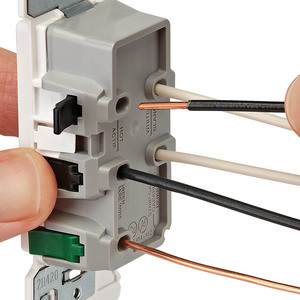I have been skim coating my plaster walls in my house with plaster past few days. I’ve been getting my butt kicked. Read various articles about using joint compound for skim coat or definitely not using skim etc all the contradictory advice you will get on building when doing an internet search. Anyone have any good luck or bad luck with using joint compound or something other than plaster … thanks for any help.
Discussion Forum
Discussion Forum
Up Next
Video Shorts
Featured Story

The recipe for linoleum hasn't changed much in nearly 170 years, yet it's still one of the greenest floors money can buy.
Highlights
"I have learned so much thanks to the searchable articles on the FHB website. I can confidently say that I expect to be a life-long subscriber." - M.K.

















Replies
You might take a look at Fibafuse . I've used it with joint compound and it seems to do a very good job. I haven't tackled a whole room yet, just fireplace type areas.
Thin a 5 gallon bucket of mud with maybe a half gallon of water, mix well and roll on the walls with a thick roller cover. Let it set for a few minutes and flatten with a Magic Trowel. Works great and it's easy.
Look up "D mix" in the search engine here. It sounds like its what you want for your application.
Be aware- there's some controversy on it. Partly because of the guy who was promoting it.
thanks for the tip. not finding any hits for d mix here though...
When you search, look for “discussion forum” for threads from here.
More D mix than you’ll need:
https://www.finehomebuilding.com/?s=D%20mix&es%5Bpost_type%5D%5Band%5D%5B0%5D=forum&referer=
Wow, thanks for the links!
I've been looking for a while for an easier/better (less expensive) way to skimcoat my horrible popcorn ceilings, especially in my kitchen where my removal of some upper cabs and a soffit mean I have bare, unpainted, forty-year-old ceiling drywall next to the horrible popcorn, and the whole thing just looks ugly.
I tried mixing up a tiny amount of D-Mix, just to give it a try--I have a wool roller, but didn't get it out for such a small experiment. (I applied it with a cheap plastic drywall knife I had lying around, instead.) It's maybe not great for covering the popcorn in one go, but I think a second coat of it will be perfect, and it was/is fantastic on the un-popcorned ceiling section, and much easier to work with than regular spackle or JC--less falling off/dripping, and much nicer to rework (and again, much less expensive).
I know it's not designed to skimcoat popcorn ceilings, I just got excited and wanted to give it a go. I'm definitely going to mix a bigger batch and try rolling it on at some point soon. That ugly bare, rough, old drywall section I covered looks like perfect new plaster now, and the popcorn I covered is a bit wavy but again, I think a second coat will make it match the bare drywall.
Thanks again!
This subject is very timely for me as I have been redoing my plaster walls (wood lath) in my old house. The old plaster is only about 1/4-3/8" thick and very cracked with many failed plaster keys. There are two rooms (4 dormers with coved knee walls/ceilings) plus the stairway. I've re-attached the sprung plaster back to the wood lath with hundreds of plaster washers and paper taped over these cracks using 20 minute mud. For areas that were so bad that the plaster was missing I backfilled with 1:1 mix of mortar/Structolite. Then I used 45 minute mud in small batches and skimmed the entire room. At this point I felt it was still not flat enough so I skimmed it again with All Purpose drywall compound. I use a 14" DW knife that is slightly bowed and pull it down over the wet compound, scrape off the excess mud and wipe the knife with a wet terry cloth towel after every pull. For me, this gets it to the point where I can then sand it with 120 and again with 220 before priming and top coating with a flat latex wall paint. The walls aren't as flat as professionally installed drywall but they are a pretty good likeness for plaster walls and I used a flat paint to minimize any undulations.
So along comes a window installer who says he's seen a lot of old houses being rehabbed with Fibafuse. I found it at a local plaster/DW supplier who told me to use All-Purpose DW mud to bond it to the old plaster after I had installed the plaster washers and tapped the cracks.(Not sure I really needed to tape the cracks but I didn't want to do this project again). I used a 3/4" paint roller to apply a thinned coat of mud and slapped the Fibafuse material up with a 6" knife, after which, I put a top-coat of mud on the still wet material. I let this dry overnight and put the last coat on while smoothing it out with my wide knife. Both rooms look good. I don't know for sure if the Fibafuse will outlast the first room where I had used 45 minute mud with no material but I feel the material helps smooth out the undulations a little better. I paid about $70 per 3' x 75' roll.
thanks for the tips!